Xerox PARC: A Nod to the Minds Behind the GUI, Ethernet, Laser Printing, and More
Although nosotros generally associate technological advancements with the companies that successfully commercialize them, there are often underappreciated bodies toiling away behind the curtain. In many cases over the last forty years, Xerox Palo Alto Research Middle (today PARC) has been that hidden thespian, inventing many of today'due south ubiquitous technologies or refining them from abstruse concepts.
Launched as a evolution arm of Xerox Corporation in 1970, PARC has played an instrumental office in the engineering of laser printing and many of the technologies that compose the personal computer -- about famously the graphical user interface (GUI) used in the Xerox 8010 Star Data System in 1981, followed by the Apple tree Lisa. The team included many of the world's superlative calculator scientists, not least of which were onetime employees of the Stanford Research Institute.
Despite its vast industry contributions, the group has been criticized for declining to capitalize on its many innovations. While some of our older readers might be familiar with the prolific Palo Alto Research Center, nosotros think its accomplishments accept largely escaped the younger tech crowd. We'd like to have a few and give credit where credit's due.

Ethernet and Internetworking
The networking platform that ships with nigh every modern computer was built-in at PARC around 1973 with Robert Metcalfe and three of his colleagues credited as inventors. An early experimental version of Ethernet ran at 2.94Mb/s and was outlined in a 1976 paper co-authored by Metcalfe chosen "Ethernet: Distributed Parcel Switching for Local Reckoner Networks" (PDF). In 1979, Metcalfe convinced Xerox, Intel and Digital Equipment Corporation to promote 10Mb/s Ethernet through the "DIX" standard.
Early Ethernet used coaxial cables, but they were eventually ditched in favor of twisted pair and cobweb optic cables. Countless other networking-related advancements unfolded during the creation and comeback of Ethernet, including the PARC Universal Package (PUP), an internetworking protocol suite that influenced the early work of TCP/IP and served equally the cornerstone of Xerox'due south later XNS protocols. Moreover, PUP was a cadre component of PARC's prophetic "office of the future" concept (check out this early advertizing).
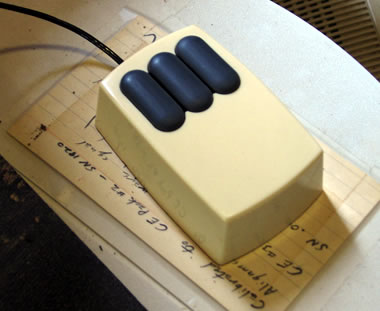
Ball and Optical Mouse
Information technology's debatable who adult the first mouse, just it wasn't PARC. Yeah, yeah that's supposed to be the theme of this article, but read on. A mouse-like bowling ball contraption was created equally a surreptitious military projection in 1952, while Stanford's Douglas Engelbart independently produced a wheel mouse in the early 60s. Only weeks before Engelbart planned to demonstrate his device in 1968, the German company Telefunken revealed a ball mouse -- though it barely resembles modern designs.
Bill English, who assisted Engelbart with his original concept, later built the "Alto" ball mouse nosotros're more familiar with while working for Xerox PARC in 1972. Its rectangular shape, button placement and peak-protruding wire set the standard we notwithstanding follow today. The device was created for PARC's early "Alto" machine, which was arguably the start modernistic personal estimator with a mouse-driven GUI, but it never hit the retail market place. PARC'south Richard Lyon went on to build the starting time optical mouse in 1981.

GUI and WYSIWYG
Having a signal-and-click interface is useless if you can't, well, point and click. PARC had to pioneer much of the graphical environment nosotros take for granted, all the way down to coining the "desktop" metaphor (conceptually speaking, Engelbart beat PARC here, too). The grouping's early GUI featured icons, popular-up menus, bank check boxes, and overlapping windows controlled with a mouse. That opened the door for some innovative software, including many of the commencement WYSIWYG applications -- a luxury in those days, to say the least.
Among those new applications was Bravo, the outset WYSIWYG discussion processor (laid the foundation for MS Word). PARC besides developed the first WYSIWYG integrated excursion editor, the Sil vector graphics editor, the Markup bitmap editor (a paint plan), as well as programming languages similar Interlisp, InterPress and Smalltalk -- the latter of which influenced C++, Objective C, CLOS, Java and more. By the tardily 70s, PARC invented linguistic technologies for spell-checking and created ane of the first networked multiplayer games, Alto Trek.
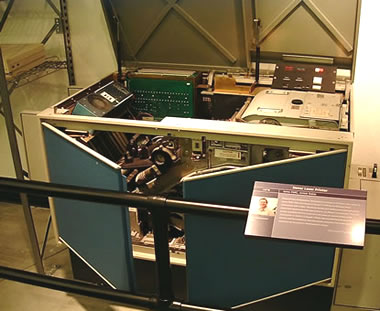
First Light amplification by stimulated emission of radiation Printer
Invented by Gary Starkweather at Xerox's Webster research center in 1969, the first laser printer epitome was fabricated by modifying a xerographic copier. Although information technology was technically birthed but ahead of PARC's founding, Starkweather collaborated with the Palo Alto squad over the following couple years to refine his original blueprint. The first commercial unit was introduced in 1975 (the IBM 3800), but it wasn't until 1981 that the market received its first office-jump laser printer, the $17,000 Xerox Star 8010.
HP's 71lb LaserJet hit the mainstream market place in 1984 and printed at a whopping 300dpi/8ppm. Information technology was quickly followed by competing devices from Brother, IBM, Apple tree and others, simply even the early on "consumer" implementations were incredibly expensive past modern standards. The LaserJet sold for $3,500 -- equal to roughly $viii,500 today. Laser printing grew into a multibillion-dollar business for Xerox, easily funding all of its other projects.
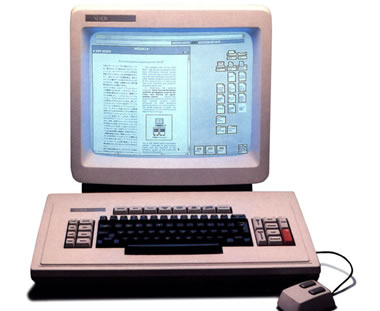
The Personal Figurer
Many of the in a higher place technologies were nowadays in PARC's experimental Alto computer, simply that system wasn't meant for prime time and was used mostly internally through the 70s. The Alto was greatly refined and commercialized in 1981 when Xerox shipped its start office workstation, known as the Xerox Star or the Xerox 8010 Data Arrangement. Intended to realize Xerox's "office of the future" vision, it was marketed as part of a consummate "personal function system" that included other workstations and file/print servers.
The Star itself sold for $16,000 but Xerox's full office setup cost more than than $fifty,000. Not only was information technology expensive, simply it was an entirely closed arrangement, which meant all the hardware and software had to be built by Xerox. Only almost 25,000 units were sold and many consider the Xerox Star a commercial failure. Others fence that it was merely ahead of its fourth dimension. A few years afterward, Apple launched the Macintosh, which borrowed many concepts from PARC and is considered the first commercially successful GUI/mouse-equipped PC.

Thinking Beyond the PC
Not just was Xerox's Palo Alto group ahead of the curve with personal computers, but it envisioned an era beyond the traditional PC most xxx years ago. PARC coined the term "ubiquitous computing" in 1988 to outline a hereafter where technology would recede into the groundwork of our lives and people would apply mobile devices to seamlessly access resources and control environments. Sound familiar at all? PARC developed some of the earliest functional examples of the "pads" and "tabs" that overflowing today's computing scene.
The PARCTab image was built in 1991 and measured 9x11x1 inches, weighed v pounds, had a Motorola processor, 4MB of RAM, a pen interface, a keyboard and an integrated mic. Information technology also had near-field communication tech a.thou.a NFC which is widely used today. A like device, called the PARCTab, was a palm-sized computer that allowed researchers to admission the Internet, read their email, bank check the weather condition and many other bones handset functions. Further back, PARC's Alan Kay described the "Dynabook" in 1972.
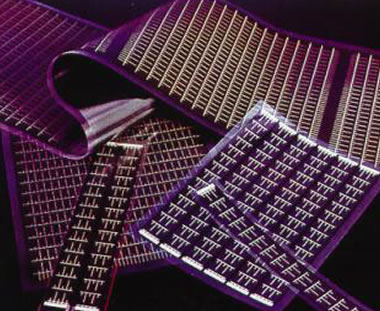
Other Advancements
With so many brilliant minds exploring seemingly every facet of calculating, there's no way we tin can list all their achievements. Along with everything higher up, the group also created or greatly contributed to:
- Amorphous silicon (used beyond various technologies, including LCD backplanes).
- Loftier-power laser tech that is the backbone of our telecommunications network.
- The calculator worm (created while experimenting with distributed computations).
- Non-erasable, magneto-optical storage technologies (commercialized via Optimem).
- A 16-bit coding organisation that lead to the ISO/IEC 10646 and the Unicode standard.
- LambdaMOO, one of the oldest standing existent-time multi-user Web environments.
- The IPv6 and HTTP-NG protocols that govern and define how the Internet works.
Xerox PARC Today

Although PARC may never go a household name, there'south no denying that information technology'due south been a driving strength in the computing manufacture for decades. When it was originally established, the research torso was tasked with designing an "office of the future." By all accounts, it accomplished that mission and more.
The sectionalization was spun off in 2002 but remains an independent subsidiary of Xerox. Many one-time PARC employees have formed their own companies, including Adobe, 3Com (bought by HP in 2022), and Spectra Diode. Also three of its eminent researchers are Turing Award winners, the "Nobel Prize of computing."
PARC continues to tinker with bleeding edge technology, from artificial intelligence (AI) and human-motorcar collaboration, to Cyberspace of Things, digital manufacturing and the digital workplace.
Click to play video
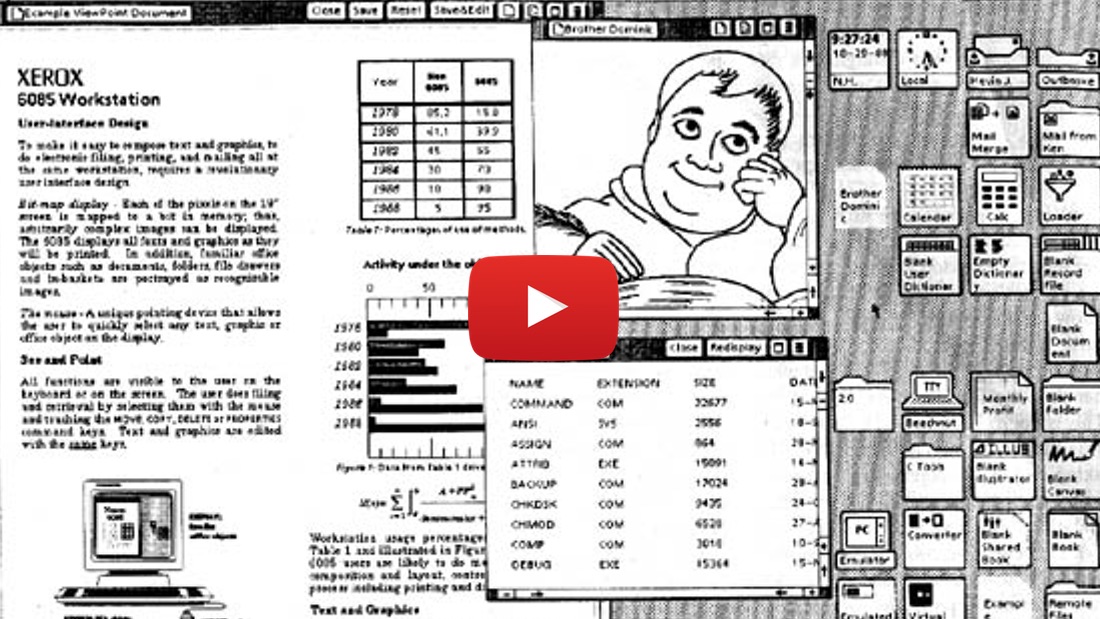
Source: https://www.techspot.com/guides/477-xerox-parc-tech-contributions/
Posted by: dobbinsladmoultan.blogspot.com


0 Response to "Xerox PARC: A Nod to the Minds Behind the GUI, Ethernet, Laser Printing, and More"
Post a Comment